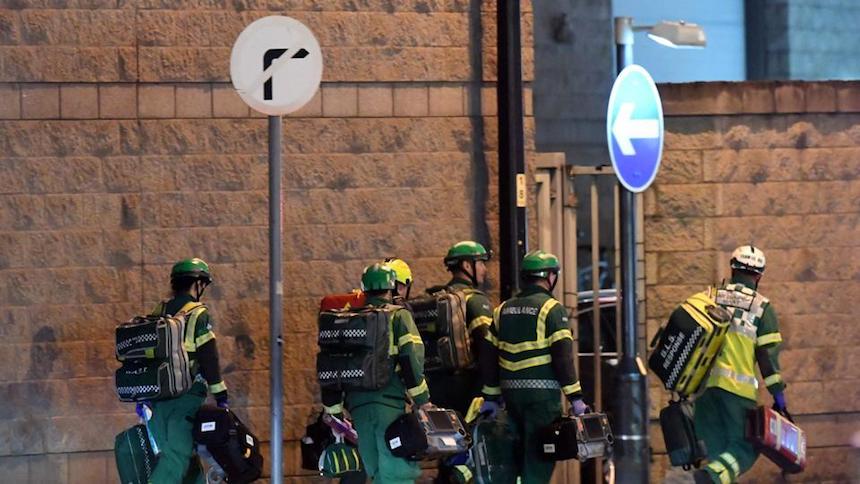
The terrorist attacks of 22 March, 22 May, and 3 June 2017 across the United Kingdom have showed very considerable variation in terms of their modality and choice of targets. They range from an attack on the iconic home of British democracy (22 March) toward an attempt to kindle a war on public relaxation, with massacres at a pop concert in Manchester (22 May) and on pubs and bars around London Bridge (3 June).
Only the Manchester bomb attack showed any technical prowess here: the other attacks look rather opportunistic and improvised using an emergent template of a vehicle assault followed by a knife rampage. Tim Wilson of the Handa Center for the Study of Terrorism and Political Violence at the University of St. Andrews offers helpful reflections on the recent wave of terrorist attacks. He notes that such atrocities are low-tech in execution, but they rely upon state-of-the-art communications to generate a wider resonance. There is an inverse relationship between means and effects here. Thus, a tactically crude attack can be launched in the full knowledge that a crowded street will be full of camera footage – dramatic images are guaranteed.
Yet, Wilson says, for all their variation, all three of these attacks fully shared one common feature: that all five of the attackers went out, apparently, with a firm death wish and absolutely no intention of coming back. Even though only the Manchester attacker, Salman Abedi, actually blew his own physical frame into fragments, it is hard to believe the other four attackers did not expect to be gunned down — as they all promptly were. Here Prime Minister Theresa May’s proposal of longer custodial sentences for those who flirt with joining such missions seem unlikely to have much deterrence effect. If anything, it may risk enhancing “rebel chic”: the perceived Islamist “glamour” that pulls in discontented youth and gives them a cause and their lives – or, indeed, carefully staged deaths – meaning.
Wilson adds that one should, of course, have a considerable measure of sympathy for all those from Theresa May downward whose unenviable job it is to protect a society whose expectations of total protection and safety are quite so extraordinarily high. (After all, this is an age where you cannot buy a coffee without the cup carrying a warning that it might scald you.) In particular, the pressures on the police at the sharp end of the threat bear sympathetic assessment. Just over 100 years ago – in the Sydney Street siege of 1911 – the rules of engagement for the Metropolitan Police were so strict that they had to knock on the door of the anarchist hide-out and get themselves shot before they were allowed to fire back. Now they are expected to gun down suspected bombers accurately and within minutes. In 2017 they have done so flawlessly: in 2005, with the tragic killing of Jean-Charles de Menezes, they did not. That must weigh on the minds of senior commanders such as Met Police boss Cressida Dick.
Perhaps most urgently, though, we also need to keep some wider sense of proportion here, says Wilson. Such terrorist attacks – which typically come in spasms, and then fade away – are an existential threat only to those individuals highly unfortunate enough to be caught directly in their path. For those maimed or bereaved or traumatized, the effect of such horrors may well be devastating and permanent. But societies are complex and resilient entities; and their continued existence is in no way fundamentally threatened by such atrocities.
There are, perhaps, lessons we can learn here from the 1970s when terrorism accounted for more victims across Western Europe than it does today. Yet back then the horrors of the day tended not to be discussed as an existential threat to civilization – if only because any reflective person could see that blowing drinkers to bits in Birmingham and Guildford pubs did not represent the same type of generalized threat as a nuclear exchange with the Soviet Union.
“The spectacle of 50,000 people turning up for the One Love Concert in Manchester on Sunday 4 June was an enormously resonant one: since the possibility of some sort of repeated attack must, one imagine, have crossed most peoples’ minds,” Wilson writes. And against the generally toxic post-Brexit backdrop, the gestures of support from other European capitals are all the more poignant. Synecdoche can make for powerful symbolic signaling – the Eiffel Tower dims its lights in solidarity with London; the Brandenburg Gate carries the projection of a giant Union Jack, and so on. “Yet such gestures also perhaps inadvertently risk not only reinforcing these icons as terrorist targets in their own right, but also entrenching the suggestion that crudely staged atrocities of tiny numbers of malcontents are somehow powerful existential assaults on whole cities, and indeed, nations,” Wilson says. “In the wake of the social media revolution, it is clearly impossible to return to the strategy of denying terrorists ‘the oxygen of publicity.’ But we should certainly be wary, however unintentionally, of reinforcing their deluded world views and narratives.”
This article is published courtesy of Homeland Security News Wire.

